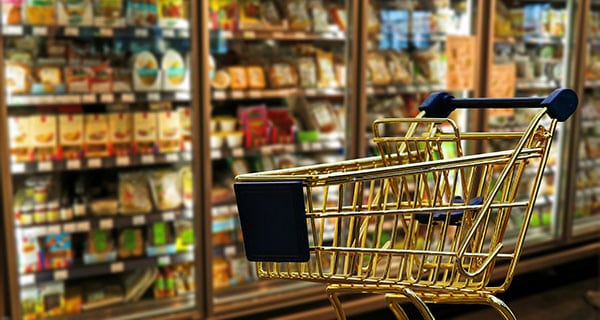 One after the other, grocers are going online. All of them, at some point over the last 12 months, have announced some sort of commitment to an e-commerce strategy.
One after the other, grocers are going online. All of them, at some point over the last 12 months, have announced some sort of commitment to an e-commerce strategy.
Costco launched its home delivery pilot in Ontario, while Maxi, Loblaws’ discount stores in Quebec, jumped on the virtual bandwagon with their Click and Collect program. Grocers are no longer content with waiting for customers to walk through the door. They now accept that they must go after and work harder for the money.
The wake-up call for food retailers came when Amazon purchased Whole Foods in the U.S. in August 2017.
The biggest concern among grocers was that it would drive down prices, even in Canada. This hasn’t yet happened, at least not in any direct way. Food inflation is not strong but neither is the sector experiencing any deflationary pressures.
But consumers are gradually walking away from traditional grocery stores. Some are drawn to specialty stores, but many are buying online and often from suppliers selling unique products not available through the major outlets. Habits are changing.
Some estimate that online sales represent about 1.5 per cent of all food retail in Canada, with some grocers seeing online sales growth reach double digits. Given that we’re one of the most Internet-connected nations in the world, sales could reach seven per cent within 10 years. That equates to about $10 billion in sales, which represents more than 800 decent-sized stores in today’s food distribution landscape.
And Canada is just catching up to several other industrialized countries. Ireland and the United Kingdom online grocery sales are at 7.5 per cent. France is at just over 5.5 per cent. Canada is nowhere near that level, since most Canadians never considered online food shopping until recently. Now the trend is regularly discussed in the media, enticing Canadians to think differently about food outlets and how they can shop.
Grocers weren’t overly enthusiastic in embracing e-commerce either. Other than Sobeys in Quebec and Longo’s Grocery Gateway in Ontario, not much virtual shopping was offered. Reluctant grocers were concerned about lost foot traffic and reduced same-store sales, which represent precious metrics in the business.
But Amazon’s clear commitment to food retailing changed everything. The sector is now playing defence and retailers are trying to embrace their new reality.
Basically, an online shopper is more rational and strategic. Senses and emotions can trick you into buying products you don’t need or shouldn’t be buying in the first place. In a physical store, want overpowers need much more often than you might think. Online, however, impulse buying is almost impossible.
Grocers are slowly having to learn how to add sales while transacting with an online customer who has access to neatly-presented information in real time, all the time. That’s a scary thought for the conservative types in the industry.
However, some Canadians find that saving money through online shopping isn’t that easy. On the one hand, free applications allow the tech savvy to save. On the other hand, the process excludes certain consumers, since it involves some research, knowledge of software use and time.
But since the Internet and social media have become so prominent, over time the number of shoppers willing to buy food online will outnumber those reluctant to do so.
Location means something different in food retailing now. More competition will only make things more complicated for grocers. If it’s death by a thousand cuts for the industry, everyone wants to be the one holding the blade.
Loblaws and Walmart have very dissimilar approaches – no surprise. Metro has been a little quiet compared to others. Sobeys has entered a partnership with U.K.-based Ocado, a powerhouse in online shopping. This could make for an interesting duo in the sector. And Costco has announced it wants to play in the online space, which could also be damaging for the establishment.
Everyone wants in. But in the end, only a few will deploy an e-commerce strategy that will click with Canadian consumers.
Dr. Sylvain Charlebois is senior director of the agri-food analytics lab and a professor in food distribution and policy at Dalhousie University.
Sylvain is a Troy Media Thought Leader. Why aren’t you?
For interview requests, click here. You must be a Troy Media Marketplace media subscriber to access our Sourcebook.
The views, opinions and positions expressed by columnists and contributors are the author’s alone. They do not inherently or expressly reflect the views, opinions and/or positions of our publication.


